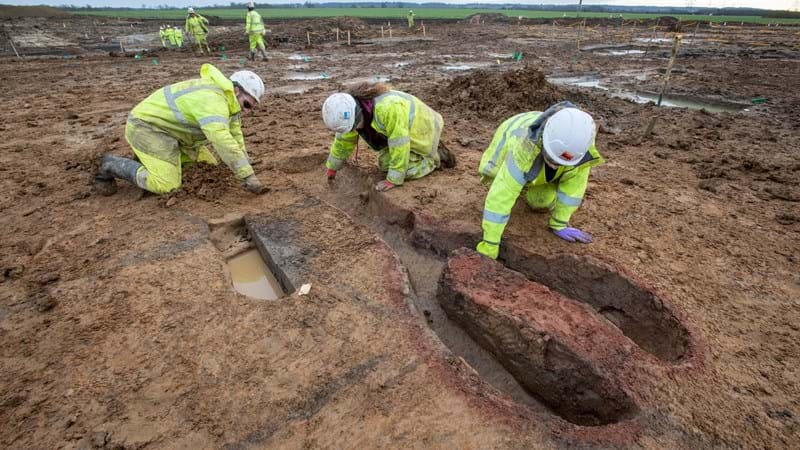Festival of Archaeology 2022
Published
19 Jul 2022
At National Highways we take great care in carrying out archaeological work before any road is built. This year we’re supporting the Festival of Archaeology, the UK’s biggest annual celebration of archaeology.

Share this article
The Festival features in-person and virtual events around the UK and encourages audiences to discover the places and archaeology around them. Events and activities this year run between 16 and 31 July and the theme for 2022 is ‘Journeys’.
Archaeological investigations are always an important part in preparing to build a road. Before we start to build, our archaeologists will carefully excavate and record what’s beneath the surface. By doing this work, we can sensitively excavate any finds, help keep the overall construction programme as short as possible and reduce disruption for the local community.
Several of our schemes have helped to uncover important historical finds around the country. Here are a couple of examples from our current schemes.
A303 Stonehenge
Our scheme has been designed to improve journeys along the A303 past Stonehenge, as well as reduce rat running in the surrounding villages. It will also enhance the landscape surrounding the monument by removing the road and putting it through a 3.3km tunnel.
To mark the Festival of Archaeology, we’ve spoken to several independent archaeology and history experts. Find out why they support our plans, and how the A303 Stonehenge scheme presents real opportunities for the World Heritage Site and for solving the traffic problem that has blighted the landscape for decades.
Interested in hearing more about our archaeology work? Sign up to our newsletter now.
A428 Black Cat to Caxton Gibbet
We’re working with MOLA (Museum of London Archaeology) to excavate and record any archaeological features before we start construction.
The very first trial trenches dug in 2020 produced a surprising number of finds, including imported goods such as fine tableware (called Samian) and amphorae (pottery containers with a pointed bottom, mainly used to transport liquids).
Well before the farm existed, people were already visiting this area. Although no evidence of where they lived has been found, they left behind signs of their activities. Flint arrow heads have been discovered dating back to the Neolithic (c. 4000-2200 BC) and Bronze Age (c. 2600-700 BC), suggesting that people were hunting wild animals in the surrounding landscape.
Find out more about archaeology on the A428 scheme
Further information
Visit the Festival of Archaeology website.
